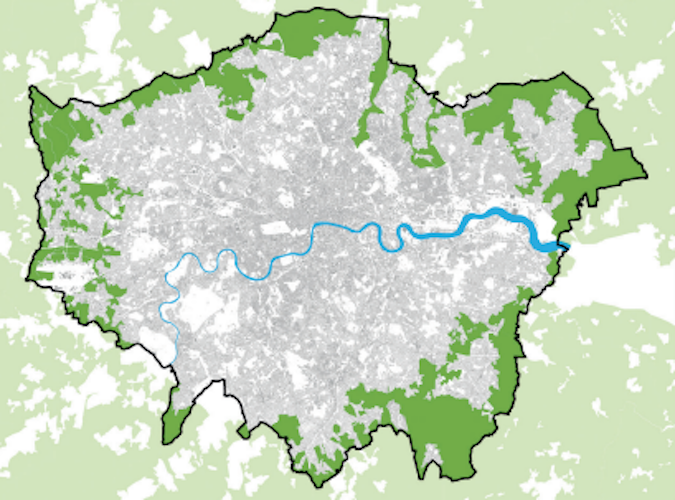Sir Sadiq Khan has announced a full-scale review of the capital’s Green Belt in response to what he said were concerns about “an impression being given that it’s a ‘wild west’ when it comes to green belt land” and its availability for building on.
The surprise announcement came during Thursday’s Mayor’s Question Time session at City Hall in response to London Assembly members (AMs) quizzing Khan about the impact on the capital of the government’s new national planning policy, which relaxes previous restrictions on Green Belt development and sets a challenging 88,000 new homes a year target for the city.
Khan has previously rejected such a review, despite the inspectors who scrutinised his current London Plan, the blueprint for development across the city, suggesting that his refusal to consider any building in the capital’s protected zone could prevent him meeting his housing targets – a view increasingly shared by planning experts as well as developers.
But the Mayor said he would not be abandoning his “brownfield land first” approach to identifying land for development, prioritising already-developed sites even while facing a new government target significantly higher than his own of 52,000 homes per year.
The review, he assured AMs, would focus strictly on the government’s new requirement to identify what it has called “grey belt” land in areas where local targets cannot otherwise be met. Grey belt, he said, citing the new policy, was tightly defined as land within the Green Belt that had already been built on or that did not strongly meet the Green Belt purposes, which are to check unrestrained sprawl, prevent urban areas merging into each other and preserve the settings of historic towns.
A pan-London review, Khan suggested, would be a way to counter “the impression being given that we can go to the Green Belt first, or that it’s a ‘wild west’ when it comes to the Green Belt”. He continued: “We don’t want speculative developers thinking they can start buying up Green Belt in and around London that for decades has been the lungs for residents in this great city of ours.”
“I can understand having a conversation about Green Belt land if it was the case that every piece of brownfield land had been used,” Khan said. “You can have that conversation then, but it’s not the case that we are at that position. That has been a concern and one of the reasons why a ‘brownfield first’ approach is the right one.” Developers failing to implement planning permissions on brownfield sites should also be subject to a “use it or lose it” policy, he suggested.
Any review will be controversial. Some 22 per cent of Greater London, exclusively in outer London, is designated as Green Belt. More than half of that total is in just three boroughs, Bromley, Havering and Hillingdon, with significant tracts also in Enfield, Redbridge, Barnet and Croydon.
An early test of the government’s new policy – and of the Mayor’s stance – will come next week, when Enfield Council’s new local plan, including proposals to de-designate part of the borough’s Green Belt to allow more than 9,000 new homes to be built on it, goes before an independent planning inspector for scrutiny.
In its formal response to the proposals, City Hall has argued that the proposed Green Belt release, primarily on already-developed sites at Chase Park and Crews Hill, does not meet London Plan requirements, and that all brownfield options had not been exhausted.
OnLondon.co.uk provides unique coverage of the capital’s politics, development and culture. Support it for just £5 a month or £50 a year and get things for your money other people won’t. Details HERE. Follow Charles Wright on Bluesky.
